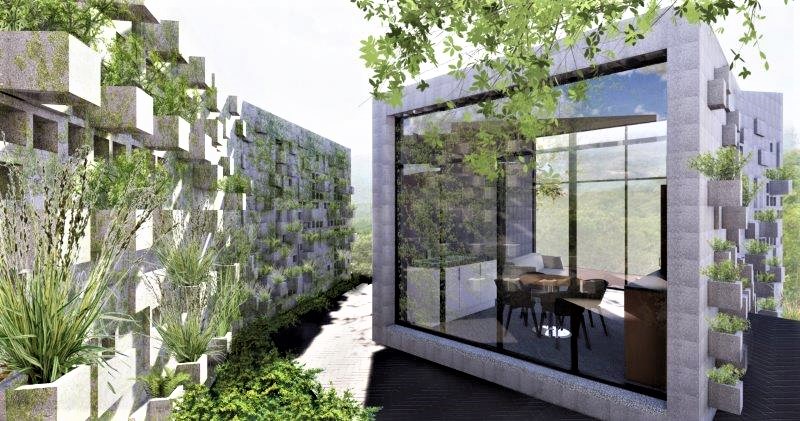
The Emantini
Seed Bank in Swaziland has showcased simple construction methods and innovative
use of materials to sculpt the user’s experience in an unexpected and inspiring
way. It is hoped that this landmark project by the Paragon Group will encourage
its replication as a template for similar Seed Banks elsewhere.
The Emantini
Seed Bank is a hi-tech form of conservation to safeguard genetic diversity
whereby scientists collect and document seeds, and then store them in a
refrigerated facility, effectively creating a ‘library’ of plant genetics. The
project consists of two well-insulated refrigerated storage facilities, a
laboratory, amenities, and a courtyard space designed to host functions.
The project
brief specified a tight budget. “Our success is testament to how we, as a
practice, can add value to any project by making the most of any budget. It
also demonstrates our mastery in design, and a capability to work in any market
sector,” Paragon Group Architect Dewald Veldsman explains. Mouaz Sabha assisted
with the construction packages, while Kim Newell carried out the initial 3D
visualisations.
Due to the
budgetary constraints, the most cost-effective construction method was to use
cinderblocks. “The humble cinderblock is no stranger to a
rural context. By demonstrating that one can use unfinished, cost-effective
concrete blocks to create a beautiful piece of architecture, you hopefully
inspire and encourage others in the community to do the same,” Veldsman
highlights.
These
cinderblocks were manufactured locally, which means minimal transportation
costs. Some of the blocks were altered by placing them on their sides on a shutter
board, and pouring concrete in to form a base. These altered blocks were then
used for the ‘holes’ in the wall, as well as for planters and lights. The faces
of the blocks were topped off with a matt sealer.
The Emantini
Seed Bank is located on a private estate, and forms part of a private nature
reserve, nursery, and botanical garden. The main contractor was AMS
Construction, under the leadership of Director Carlos dos Santos, who
collaborated with the Paragon Group on the Malkerns Square Estate and Matsapha
Link Shopping Centre, both in Swaziland. These projects also focused on
conventional construction methodologies, materials, and non-specialised skills.
Commenting on
the importance of the Seed Bank as a specialised conservation measure, Veldsman
elaborates that humans are eradicating our fauna and flora at an exponential rate,
while the earth’s human population is rapidly nearing its limit. “The client is
a future thinker, and realises how our perceived value of all genetic diversity
will change in the near future especially, when it is too late.
“He is a keen
plant enthusiast, and would like his personal legacy to be a priceless gift
back to society. Thus he had this vision of popularising the idea of
safeguarding plant genetics. The first step in this mammoth task has been to
create a cost-effective and beautiful Seed Bank as a prototype, in the hope to
inspire other like-minded people to do the same. He is convinced that the only
way to save the planet is by changing the way we think, and this project was a
good place to start,” Veldsman concludes.
More information from Hugh Fraser, Tel:
+27(0)11 482 3781 / Email: media@paragon.co.za / www.paragon.co.za
More news
- PART 2: HARNESSING THE POTENTIAL OF HIGH SULPHUR FLY ASH IN CONCRETE PRODUCTION
- PART 1: HARNESSING THE POTENTIAL OF HIGH SULPHUR FLY ASH IN CONCRETE PRODUCTION
- PART 2: DESIGN AND CONSTRUCTION OF SLAB-ON-GROUND: APPLYING ACI 318
- DESIGN AND CONSTRUCTION OF SLAB-ON-GROUND: APPLYING ACI 318
- DOK-ING’s innovative electric mining equipment unveiled at ElectraMining

